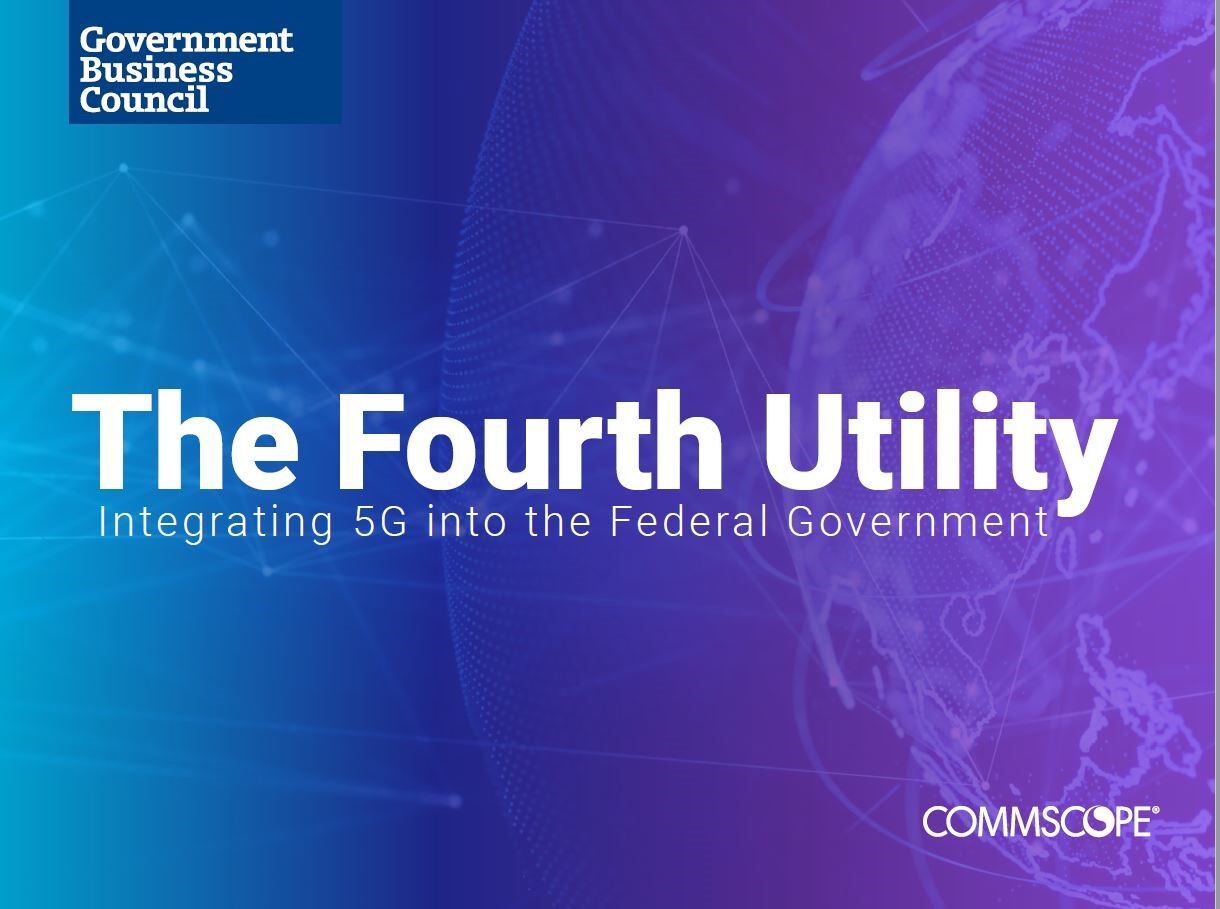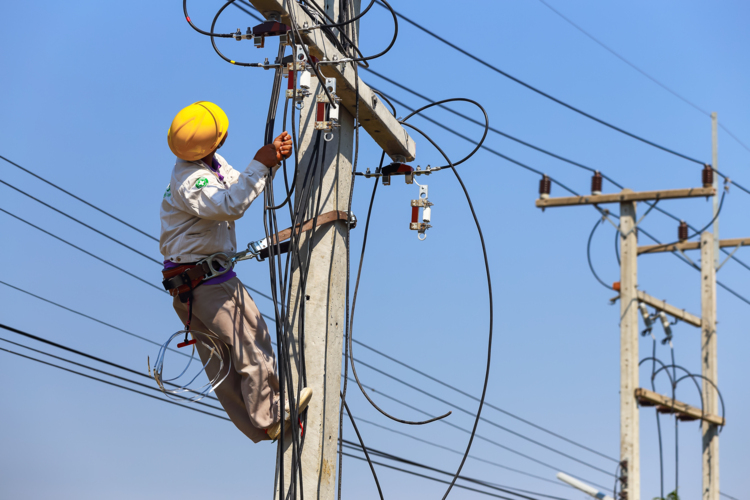Fifth generation wireless technology (5G) promises to usher in a new era of connection, allowing government agencies to send and receive large amounts of data at lightning speeds.
In addition to faster transmission, 5G offers low latency and defined quality of service to support next-generation capabilities such as artificial intelligence, advanced analytics, virtual reality, and other mission-critical applications.
 “5G has the potential to change the way that we connect. Investments in smart cities, broadening quality digital access to rural areas, and helping soldiers on the battlefield receive remote medical care are just some examples of how this network could have social and economic effects,” according to The Fourth Utility — Integrating 5G into the Federal Government, an issue brief from the Government Business Council (GBC) and CommScope.
“5G has the potential to change the way that we connect. Investments in smart cities, broadening quality digital access to rural areas, and helping soldiers on the battlefield receive remote medical care are just some examples of how this network could have social and economic effects,” according to The Fourth Utility — Integrating 5G into the Federal Government, an issue brief from the Government Business Council (GBC) and CommScope.
Yet, to fully-deploy 5G, agencies need to consider the infrastructure layer including digital distributed antenna systems (DAS) and fiber cabling. At the same time, the true promise of 5G is heavily dependent on a robust fiber infrastructure, according to the GBC. The fact is that many agency networks still feature legacy technology—which is no match for the formidable performance provided by 5G.
The Pentagon Leads the Way
For those federal agency leaders who might be wary of 5G adoption, looking at how the Department of Defense (DoD) is moving forward with 5G implementation could yield some valuable lessons, the GBC brief states. The DoD is one of the strongest federal proponents of 5G, incorporating it into the National Defense Strategy (NDS) and experimenting with Internet of Things (IoT) prototypes.
In fact, the NDS highlights four key goals— promoting technology development; assessing, mitigating, and operating through 5G vulnerabilities; influencing 5G policies and standards; and engaging partners in their efforts.
So far, the DoD’s 5G rollout has been successful because of network customization that meets the needs of specific missions. For instance, the first tranche of DoD innovation testbeds highlights networks that are adaptable to serve localized needs, according to the GBC. Five military bases were initially designated as testbeds where commercial 5G technology can be evaluated for its ability to enhance military and service-specific operational challenges, such as smart warehousing. Smart warehouse experiments are a proving ground for, among other things, real-time asset tracking, predictive analytics, environmental sensing, robotics, and augmented reality.
Other federal agencies can take advantage of this customized approach as well, ensuring that the infrastructure they create is specific to their needs and mission.
5G and the Federal Government: What’s Needed?
To open new opportunities for the federal government, the Federal Communications Commission (FCC) is working to expand spectrum access, including auctioning high-band spectrum, building out mid and low-band spectrum, and working with unlicensed bands. With the proliferation of 4G as well as rapid growth in 5G, demand for spectrum access far exceeds supply.
Agencies must address other areas, including:
In-Building Connectivity: The physical aspects of many federal buildings pose challenges to connectivity. Age and outdated infrastructure make it harder for signals to penetrate walls. To access the signal with these impediments, agencies will need to invest in distributed antenna systems to ensure coverage throughout the building.
Fiber Optic Requirements: To date, a lot of the 5G focus is on its wireless capabilities. Fiber optics is a foundational aspect of building out this infrastructure. Cell densification and increased backhaul connections require efficient transport, decoding and routing to maximize network performance. This expanded transmission capacity will require more fiber optics in both the data center and external fiber network.
Security: Security, as always with any type of network, is a big challenge. As agencies move beyond their perimeter network boundaries, traditional firewalls alone cannot protect organizations against an expanding threat surface. The supply chain is more susceptible to inadvertent or malicious introductions of vulnerabilities, as witnessed in the recent SolarWinds, Colonial Pipeline, and Kaseya attacks. Agencies will need to adopt a comprehensive end-to-end security strategy that includes complete visibility, inspection, and controls across all layers of the network including application, signaling, data planes, and underlying infrastructure.
CommScope: Ushering in the 5G Era
The GBC Issue Brief positions 5G as a “new era of connection.” This era can start with CommScope’s ERA® digital DAS, which delivers high performance in-building connectivity with speed and simplicity. The modular system allows agencies to support the demands of cellular coverage and capacity and provide the growth needed for the future of 5G networks. Since we are all digital, the ERA® solution is extremely flexible operating on fiber optic, standard IT (CAT6A) and coax-based infrastructure.
Additional Resources:
Download the Government Business Council Issue Brief: The Fourth Utility — Integrating 5G into the Federal Government
Learn more about our ERA solution here.












